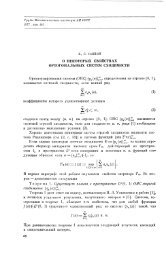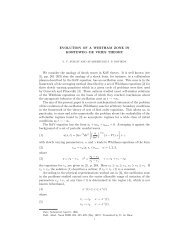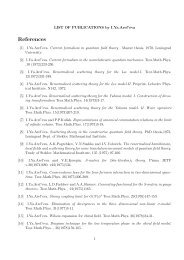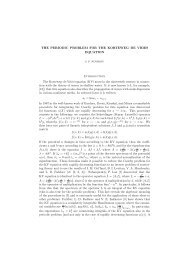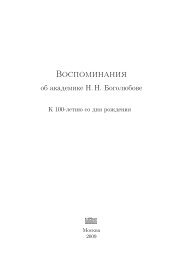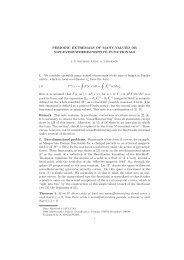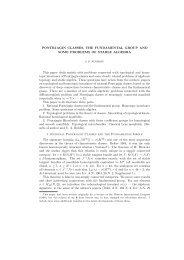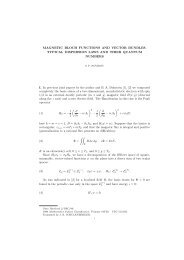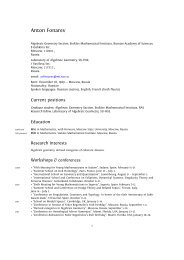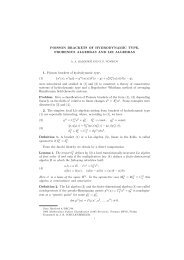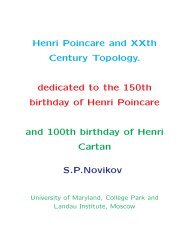POISSON BRACKETS AND COMPLEX TORI
POISSON BRACKETS AND COMPLEX TORI
POISSON BRACKETS AND COMPLEX TORI
You also want an ePaper? Increase the reach of your titles
YUMPU automatically turns print PDFs into web optimized ePapers that Google loves.
<strong>POISSON</strong> <strong>BRACKETS</strong> <strong>AND</strong> <strong>COMPLEX</strong> <strong>TORI</strong> 9only if the derivatives ∇ τi Q in all directions tangent to the “general” manifoldof the constant annihilator M A provide a basis of the holomorphic 1-forms ofthe Riemann surface Γ.The proof follows immediately from the Propositions 1 and 2 by comparing(8) with the Abel transformation.2 The real structure. “Action-angle” variablesWe shall assume that the family of algebraic curves M n is given as a manifoldwith an antiholomorphic involution σ : M n → M n , σ 2 = 1, extended to an antiinvolutionof the fibering with fiber Γ: N n+1 → M n . The fixed manifold MAσthus consists only of curves Γ with an antiholomorphic involution σ Γ : Γ → Γ,σΓ 2 = 1. The form Q = Q(Γ, λ) dλ and the annihilator A here must also becoordinated in the natural way with the involutions σ and σ Γ of the fiberingM n+1 → M n with fiber Γ:a) σ ∗ ΓQ = Q on N n+1 ,b) σ ∗ A = A on M n .(11)The simplest class of real structures, which we shall call “elementary” forthe Hamiltonian systems of interest to us, can be described as follows. Weconsider M- or (M − 1)-curves Γ where the number of fixed ovals of the antiinvolutionσ τ is equal either to g + 1 (M-curves) or g ((M − 1)-curves). ForM-curves k = g or k = g + 1 is possible. For (M − 1)-curves only k = g ispossible (we assume that k ≧ g; see §1; the case k < g is also interesting, butwe do not consider it for the time being). The Hamiltonian H(Γ) must be real,i.e., H(σΓ) = H(Γ).Lemma. If the Poisson bracket (A, Q) is coordinated with the elementary realstructure, i.e., it possesses property (11), then the real collections γ 1 , . . . , γ kare invariant under the dynamics generated by H(Γ), where the γ i all lie onpairwise distinct, fixed ovals of the anti-involution:γ j ∈ a j , a i ∩ a j = Φ (i = i 1 , . . . , i g or i = 1, 2, . . . , g + 1). (12)For M-curves and k = g the possible collections γ i ∈ a i form the g + 1connected component which is isomorphic to real torus T g . For M-curves



